Singapore’s Revamped Peranakan Museum Promises Gorgeous New Galleries And Cultural Jewels
When the Peranakan Museum reopens 17 February, visitors can look forward to a more inclusive collection.
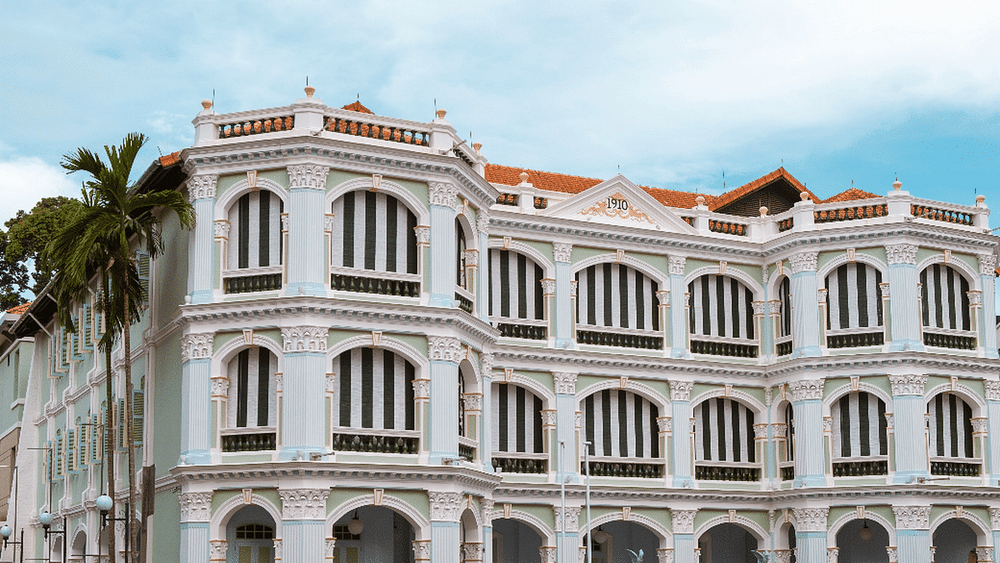
After a four-year renovation, the Peranakan Museum is set to reopen on 17 February. Dedicated to presenting the cross-cultural art and heritage of Peranakan communities in Southeast Asia, the museum boasts one of the most comprehensive public collections of Peranakan objects. The reimagined space, which spans three floors, examines the diversity of Peranakan communities through nine themed galleries—focusing on furniture, ceramics, batik, decorative textiles, jewellery and fashion. Harper’s BAZAAR spoke to Kennie Ting, the director of the Peranakan Museum, who shares what we can expect.
Related article: Guo Pei Walks Us Through Her Exhibition At The Asian Civilisations Museum
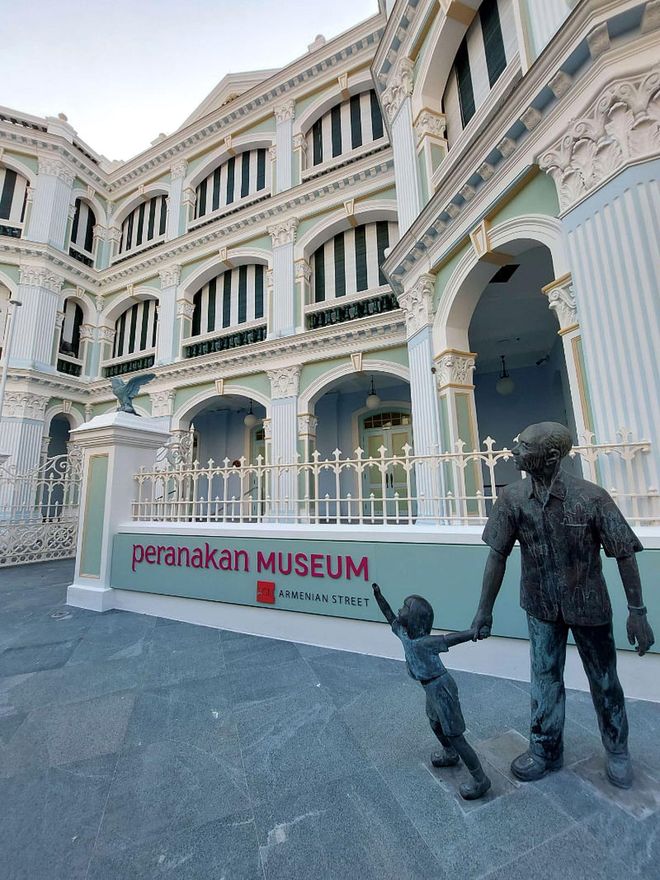
Singapore's Peranakan Museum. Photo: Peranakan Museum
Tell us more about the new Peranakan Museum. What are the key highlights that are most exciting to you?
To me, the most exciting thing about the new Peranakan Museum is the exhibition design. I am very particular about display and design and I took a very active hand in shaping and guiding the overall aesthetics of the museum. People used to say that the old Peranakan Museum was like a “jewel”. This new Peranakan Museum will be like a “jewel box”, where each and every gallery has its own look and feel, and there is a sense of building drama as you walk through the museum to the very last gallery, which, as it so happens, is our Jewellery Gallery.
Some of the galleries will reference the old Peranakan Museum—we’re not throwing the baby out with the bathwater, entirely. So our visitors will find some parts of the museum familiar. There are some galleries, however, that are going to be wildly different—shockingly contemporary. We thought we’d experiment and push the envelope for one or two galleries. I won’t say more, but keep a look out for the Ceramics Gallery, which will be very different than what anyone expects; though it keeps to the maximalist essence of Nyonya ware and Peranakan material culture.
Another highlight is our Fashion gallery on the third floor. We will be presenting a full suite of dress: kebaya of course, but also shoes and accessories; not only womenswear but also menswear. There will also be contemporary takes on kebaya that are kind of intriguing. And the best thing is that gallery will have the look and feel of an intimate boutique—walking into it will be like going shopping. I’m super-pleased with this gallery.
Related article: ACM Unveils New Fashion, Textiles And Jewellery Galleries
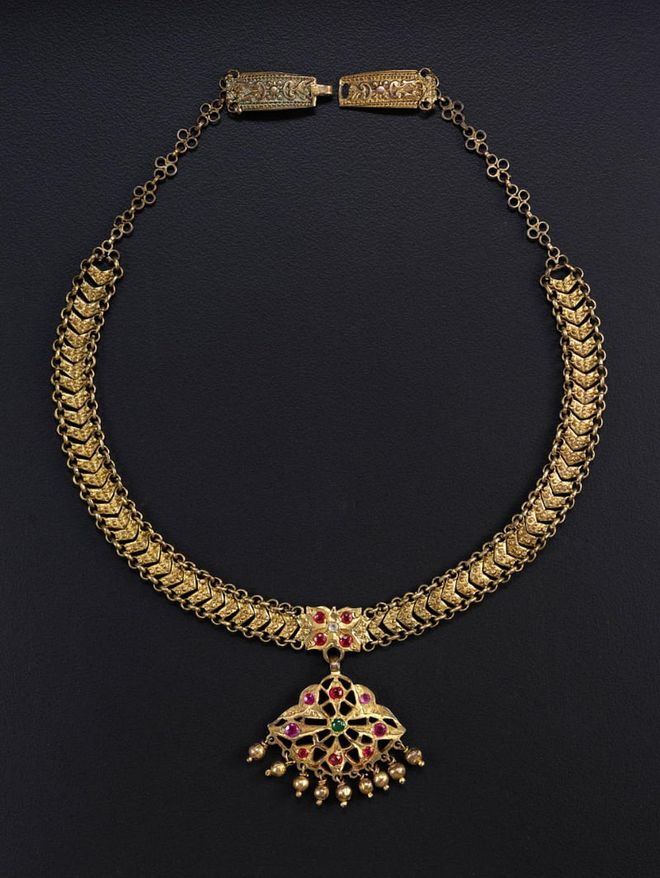
A Chitty Melaka addigai adapted from South Indian examples, early 20th century. Photo: Courtesy of Peranakan Museum

A radiogram with Plessey autochanger and two HMV 78rpm records from 141 Neil Road. Photo: Courtesy of Peranakan Museum
What was the process like for the revamp of the museum and what were the museum's key considerations when planning it in terms of the scope and the presentation of the artefacts and exhibits?
There were two key considerations in planning the scope and presentation of the museum. The first was that the museum had to be inclusive. One thing that’s quite different is that we don’t only feature the Chinese Peranakan (like before); we also feature the Chitty Melaka (Indian Peranakans), Arab Peranakans and Jawi Peranakans. We also anchor the roots of Peranakan material culture in the larger Malay-Indonesian world. I think it’s very important to acknowledge that much of what is Peranakan culture draws from Malay-Indonesian culture. The word “Peranakan” was, after all, an inclusive kind of word, meaning “of the womb” and used by Malay-Indonesian communities to refer to other cultures who found a home here in the region and assimilated, so to speak, blending their own cultures with that of the local.
The second consideration was that the curatorial approach had to be multi-faceted. The new museum will be object-focused, like the ACM (Asian Civilisations Museum). We present works of great, sometimes gasp-inducing, beauty, representing long standing traditions of craftsmanship in Singapore and Asia. At the same time, we still provide socio-cultural and historical information on the various Peranakan communities. Intangible cultural heritage is something that is also very important to us. We have partnered with all the Peranakan-related associations and communities in Singapore to put together interactives and videos that document the more ephemeral aspects of culture, for example, how certain classic foods are made. Finally, to emphasise that “Peranakan” is a living culture, we also feature contemporary expressions—artworks, works of fashion and design, etc—that are inspired by the culture.
Related article: Singapore Jewellers Create Designs Inspired By Asian Civilisations Museum’s Collections
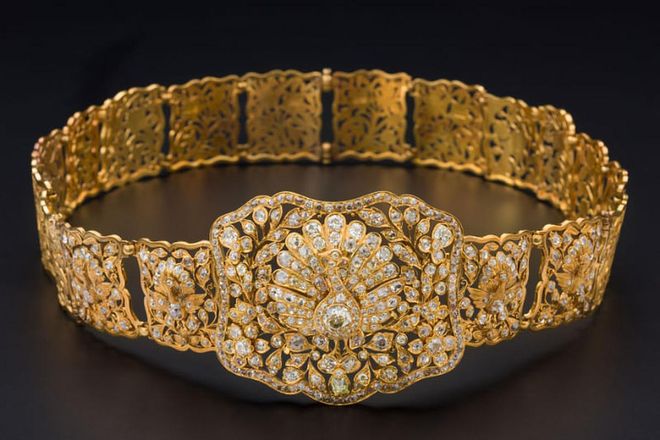
Peacock belt. Gift of Edmond Chin. Photo: Courtesy of Asian Civilisations Museum
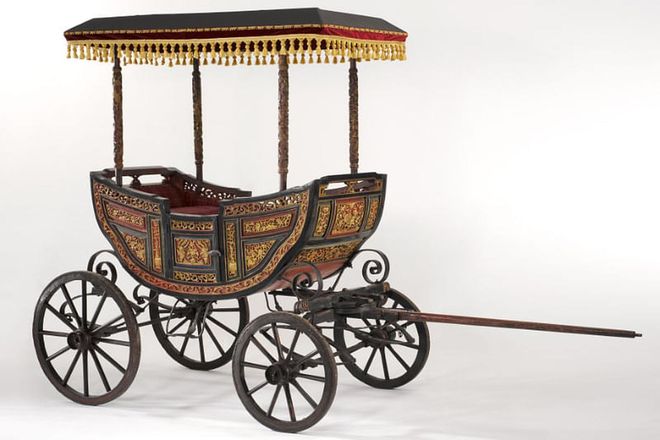
Carriage. Gift of Dr. Boedi Mranata, Jakarta. Photo: Courtesy of Asian Civilisations Museum
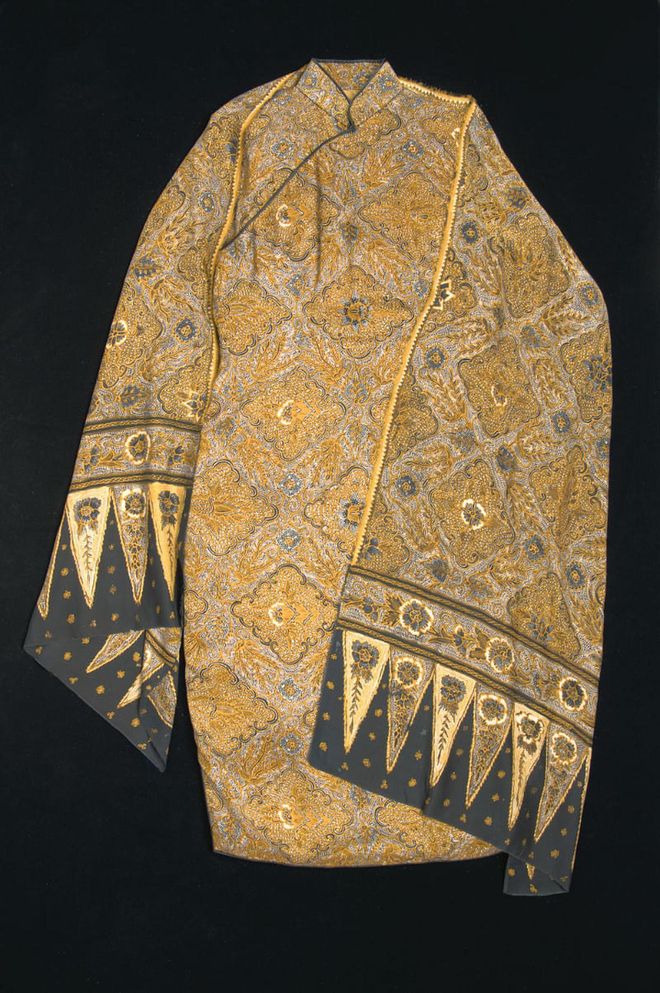
Cheongsam with selendang. Gift of Mdm Kwa Geok Choo. Photo: Courtesy of National Museum of Singapore
What is the best way for a visitor to experience this museum?
The Peranakan Museum has three floors, each featuring a major theme. The ground floor explores the theme “Origins” and draws out the links between Peranakan cultures and the larger Malay-Indonesian world. The second floor is on the theme of “Home”, and is designed to feel like a warm and intimate living space. It will feature furniture and furnishings from major families and houses in Singapore and the region. The third floor is themed “Style” and will feature the bling, so to speak – batik and other decorative textiles, kebaya and other forms of dress, and of course, jewellery.
The museum experience is actually quite straightforward, I would just follow the flow upwards from the first to the third floor. I’d say the museum would probably require half a day to complete at least, because there’s just so much to see, and many of the pieces are so ornate and have so much decorative detail. I’m pretty sure our visitors will keep coming back because, really, the pieces we are displaying and some of the gallery designs are quite spectacular, and beg repeat visits. I’m rather proud of what we’ve achieved.
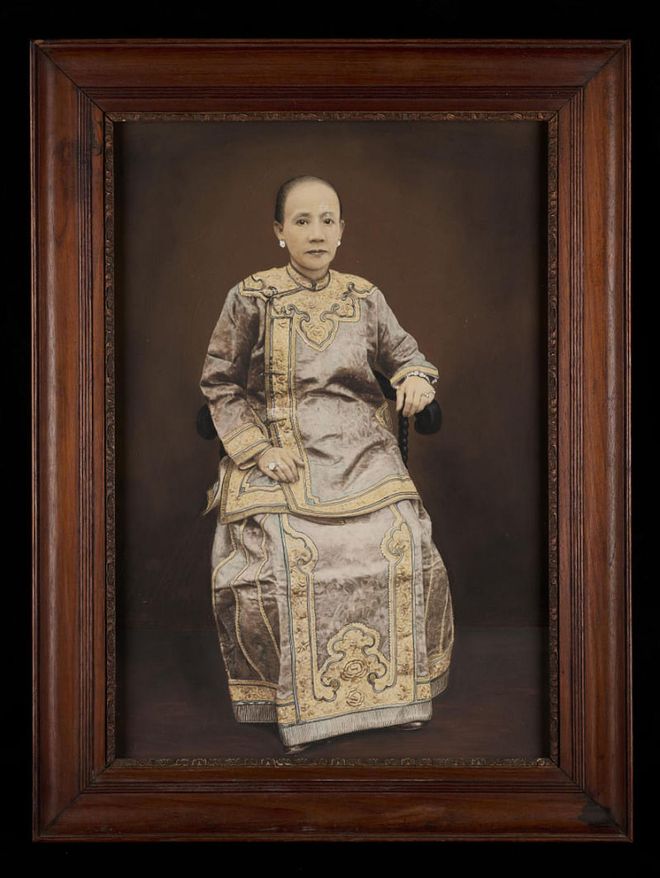
Hand painted photograph of Lie Pa-toe Nio. Photo: Courtesy of Peranakan Museum
What role does Peranakan fashion play in this new museum and what exhibits can visitors look forward to?
We have a whole floor dedicated to style! One thing we try to explore in our third-floor galleries on “Style” is the question of whether or not there’s such a thing as “Peranakan fashion”. A lot of the classic tropes of Peranakan fashion actually draw from Malay-Indonesian fashion. A case in point is the kebaya, which has its roots in the Malay-Indonesian world, though it has absorbed elements from India, China, Europe and elsewhere. I’m particularly excited about kebaya because of the recent announcement of a multi-national effort to inscribe kebaya as UNESCO World Intangible Cultural Heritage.
I look forward to us playing our part in promoting this effort by presenting visitors with a fuller display of many different types of kebaya from across the Malay-Indonesian world (i.e., not just Peranakan) to demonstrate just how surprisingly rich and varied kebaya culture is.
Peranakan men and women also dressed themselves in modes that weren’t “Peranakan” per se—they wore cheongsams and Western-style suits and gowns as well. We will have some of these not-so-obviously Peranakan types of fashion in the galleries too. If anything, I think what we try to say in our “Style” galleries is that “Peranakan” is more of a mindset in fashion terms, a willingness and openness to experiment with hybrid styles of dress—this openness to experimentation is something that forms part of our port city heritage and identity.
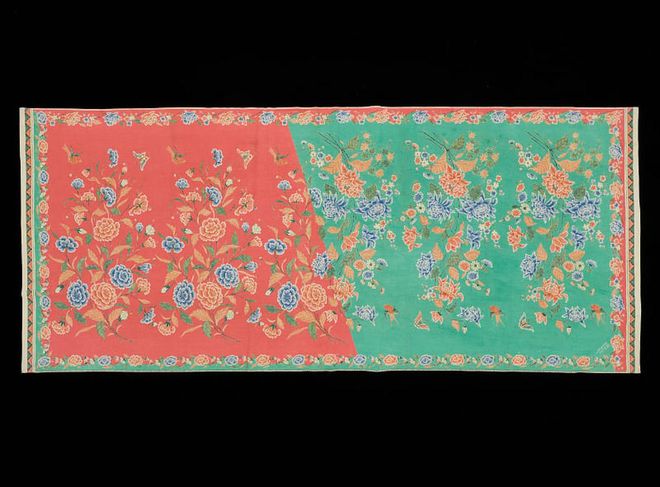
Kain panjang (skirtcloth). Photo: Courtesy of Peranakan Museum
Why do you think Peranakan culture is so integral to the Singapore story? What do you hope visitors will learn and discover from visiting the Peranakan Museum?
Peranakan culture is an integral part of Singapore’s port city heritage; Peranakan communities form part of the rich tapestry of cultures and peoples that make up our “rojak” Singapore identity. In Malay, “Peranakan” means “locally born” or “born of the same womb”, so to a certain extent, “Peranakan” can refer to all of us: descendants of immigrants who came here to the Malay-Indonesian world, and adopted the rich culture in these parts here as integral parts of our own. In other words, to a certain extent, we can all be considered orang Peranakan Singapura.
The new Peranakan Museum is going to challenge the visitor to consider the questions “What is Peranakan?” and “How does Peranakan relate to me?”. We hope to move beyond stereotypical conceptions of what “Peranakan” means. I hope everyone will keep an open mind and enjoy the experience. I look forward to welcoming everybody very soon.
The Peranakan Museum is at 39 Armenian Street and reopens on 17 February.